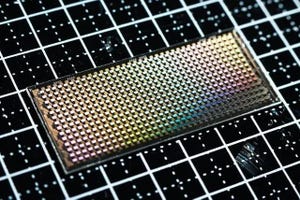Hannover Messe 2024
.jpg?width=700&auto=webp&quality=80&disable=upscale)
Self-Driving Cars Compete in Abu Dhabi's Autonomous Racing League
Self-Driving Cars Compete in Abu Dhabi's Autonomous Racing League
Using AI, the race cars learned how to maneuver around the track
Commentary
VP of Sustainability and Services at Schneider Electric
EVP and Portfolio Lead, Capgemini Americas
Strategic Marketing Leader, Trimble Automotive & IoT
Omdia Principal Analyst, IoT
Vice-president and chief information security officer
All the latest robotics news from IoT World Today
The design is available to consumers in every U.S. state except Maryland
The new design can grip a variety of objects giving it a range of potential industrial applications
Sanctuary aims to create ‘human-like intelligence’ in robots with its seventh-generation robot
The LocoMan quadruped robot can pick up and manipulate objects with the same legs it uses to walk
Pudu Robotics debuted its first robot designed to navigate industrial facilities
.png?width=300&auto=webp&quality=80&disable=upscale)

.png?width=300&auto=webp&quality=80&disable=upscale)



.jpg?width=300&auto=webp&quality=80&disable=upscale)





.png?width=100&auto=webp&quality=80&disable=upscale)


.png?width=300&auto=webp&quality=80&disable=upscale)

.png?width=300&auto=webp&quality=80&disable=upscale)
.png?width=150&auto=webp&quality=80&disable=upscale)
_(1).jpeg?width=150&auto=webp&quality=80&disable=upscale)
.jpg?width=150&auto=webp&quality=80&disable=upscale)


.png?width=150&auto=webp&quality=80&disable=upscale)

.png?width=700&auto=webp&quality=80&disable=upscale)

.png?width=700&auto=webp&quality=80&disable=upscale)
